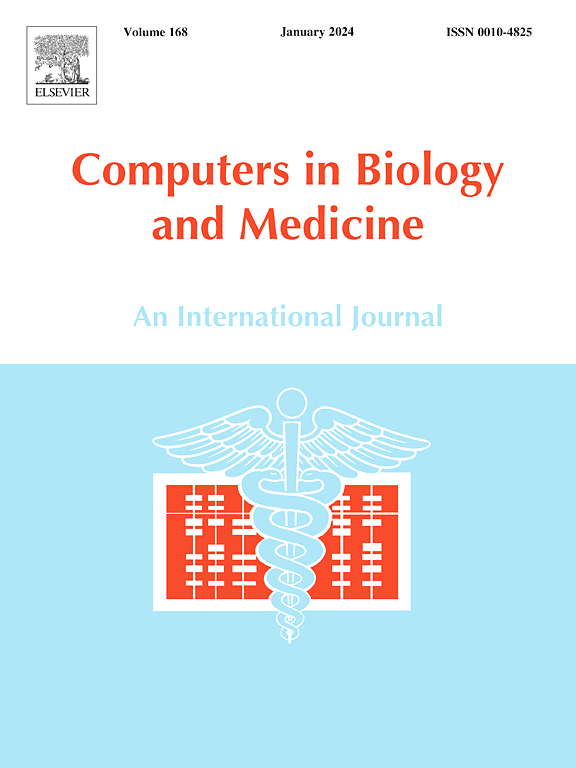Interpretable deep learning architecture for gastrointestinal disease detection: A Tri-stage approach with PCA and XAI
IF 7
2区 医学
Q1 BIOLOGY
引用次数: 0
Abstract
GI abnormalities significantly increase mortality rates and impose considerable strain on healthcare systems, underscoring the essential requirement for rapid detection, precise diagnosis, and efficient strategic treatment. To develop a CAD system, this study aims to automatically classify GI disorders utilizing various deep learning methodologies. The proposed system features a three-stage lightweight architecture, consisting of a feature extractor using PSE-CNN, a feature selector employing PCA, and a classifier based on DELM. The framework, designed with only 24 layers and 1.25 million parameters, is employed on the largest dataset, GastroVision, containing 8000 images of 27 GI disorders. To improve visual clarity, a sequential preprocessing strategy is implemented. The model's robustness is evaluated through 5-fold cross-validation. Additionally, several XAI methods, namely Grad-CAM, heatmaps, saliency maps, SHAP, and activation feature maps, are used to explore the model's interpretability. Statistical significance is ensured by calculating the p-value, demonstrating the framework's reliability. The proposed model PSE-CNN-PCA-DELM has achieved outstanding results in the first stage, categorizing the diseases' positions into three primary classes, with average accuracy (97.24 %), precision (97.33 ± 0.01 %), recall (97.24 ± 0.01 %), F1-score (97.33 ± 0.01 %), ROC-AUC (99.38 %), and AUC-PR (98.94 %). In the second stage, the dataset is further divided into nine separate classes, considering the overall disease characteristics, and achieves excellent outcomes with average performance rates of 90.00 %, 89.71 ± 0.11 %, 89.59 ± 0.14 %, 89.51 ± 0.12 %, 98.49 %, and 94.63 %, respectively. The third stage involves a more detailed classification into twenty-seven classes, maintaining strong performance with scores of 93.00 %, 82.69 ± 0.37 %, 83.00 ± 0.38 %, 81.54 ± 0.35 %, 97.38 %, and 88.03 %, respectively. The framework's compact size of 14.88 megabytes and average testing time of 59.17 milliseconds make it highly efficient. Its effectiveness is further validated through comparisons with several TL approaches. Practically, the framework is extremely resilient for clinical implementation.
用于胃肠道疾病检测的可解释深度学习架构:基于PCA和XAI的三阶段方法。
胃肠道异常显著增加死亡率,并对卫生保健系统造成相当大的压力,强调了快速检测、精确诊断和有效策略治疗的基本要求。为了开发一个CAD系统,本研究旨在利用各种深度学习方法对胃肠道疾病进行自动分类。该系统采用三级轻量级架构,包括使用PSE-CNN的特征提取器、使用PCA的特征选择器和基于DELM的分类器。该框架仅设计了24层和125万个参数,用于最大的数据集GastroVision,其中包含27种GI疾病的8000张图像。为了提高视觉清晰度,采用了顺序预处理策略。模型的稳健性通过5倍交叉验证进行评估。此外,还使用了几种XAI方法,即Grad-CAM、热图、显著性图、SHAP和激活特征图,来探索模型的可解释性。通过计算p值来保证统计显著性,证明了框架的可靠性。本文提出的PSE-CNN-PCA-DELM模型在第一阶段取得了突出的效果,将疾病的位置划分为三个主要类别,平均准确率(97.24%)、准确率(97.33±0.01%)、召回率(97.24±0.01%)、F1-score(97.33±0.01%)、ROC-AUC(99.38%)和AUC-PR(98.94%)。在第二阶段,考虑到整体疾病特征,将数据集进一步划分为9个独立的类别,取得了优异的结果,平均成功率分别为90.00 %,89.71±0.11%,89.59±0.14%,89.51±0.12%,98.49%和94.63%。第三阶段,更详细地划分为27个等级,分别以93.00 %、82.69±0.37%、83.00±0.38%、81.54±0.35%、97.38%和88.03%的成绩保持较强的表现。该框架的紧凑尺寸为14.88兆字节,平均测试时间为59.17毫秒,这使得它非常高效。通过与几种TL方法的比较,进一步验证了其有效性。实际上,该框架对于临床实施具有极大的弹性。
本文章由计算机程序翻译,如有差异,请以英文原文为准。
求助全文
约1分钟内获得全文
求助全文
来源期刊

Computers in biology and medicine
工程技术-工程:生物医学
CiteScore
11.70
自引率
10.40%
发文量
1086
审稿时长
74 days
期刊介绍:
Computers in Biology and Medicine is an international forum for sharing groundbreaking advancements in the use of computers in bioscience and medicine. This journal serves as a medium for communicating essential research, instruction, ideas, and information regarding the rapidly evolving field of computer applications in these domains. By encouraging the exchange of knowledge, we aim to facilitate progress and innovation in the utilization of computers in biology and medicine.
 求助内容:
求助内容: 应助结果提醒方式:
应助结果提醒方式:


